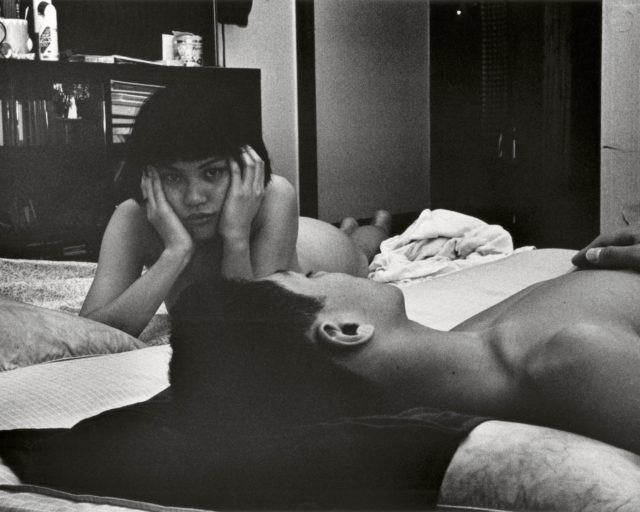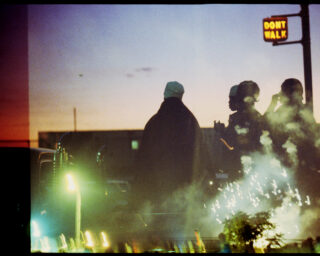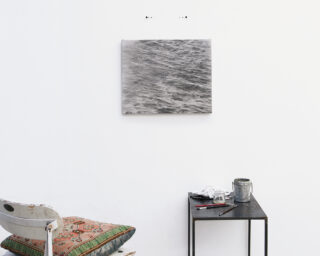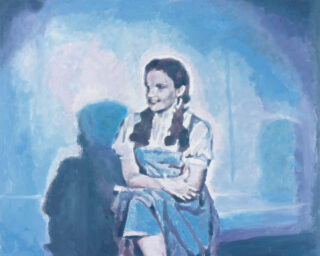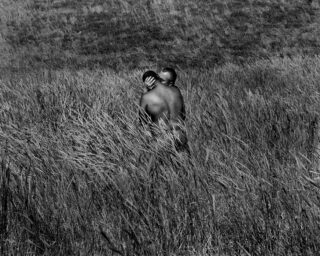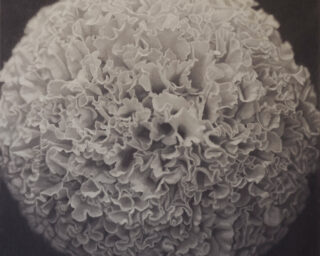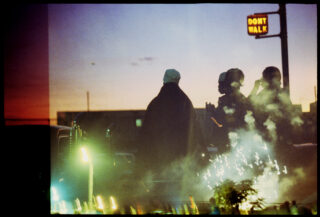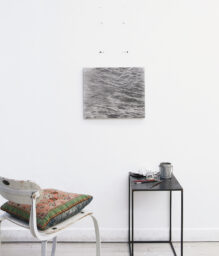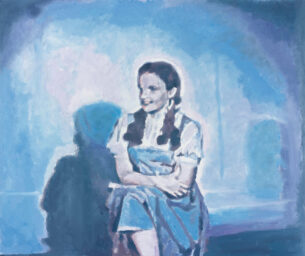The Threat of Being Seen
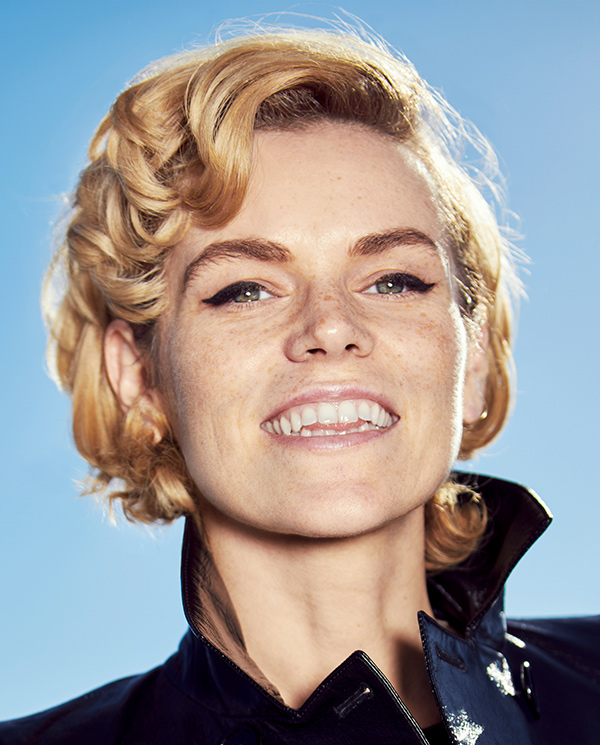
Mark Williams and Sara Hirakawa, Alex Prager, 2017
© the artists
When Alex Prager first began teaching herself photography, at the age of twenty-one, in 2000, printing black-and-white pictures in a home darkroom in Koreatown, Los Angeles, she’d hang them in the laundry room of her apartment building. Some prints disappeared; this was intentional. “I was curious to find out what people liked, which pictures they were drawn to,” Prager says from her studio in LA. Since those formative days, the artist’s work has radically transformed—most visibly in her emergent predilection for lurid, captivating color and a consciously narrative approach. Prager is known for photographing psychological, hypervivid, theatrically constructed scenes that evoke stills from classic Hollywood films, as evident in her new monograph Silver Lake Drive (2018). Cinematic and filmic are adjectives frequently applied to Prager’s photographs, but for Prager that means more than a purely aesthetic quality. “It’s about sparking a story in peoples’ minds,” she says. “I’m most interested in the way people connect to my work based on something that happened to them, on life experiences I’ve never had. For me, emotion trumps everything else in the picture.”
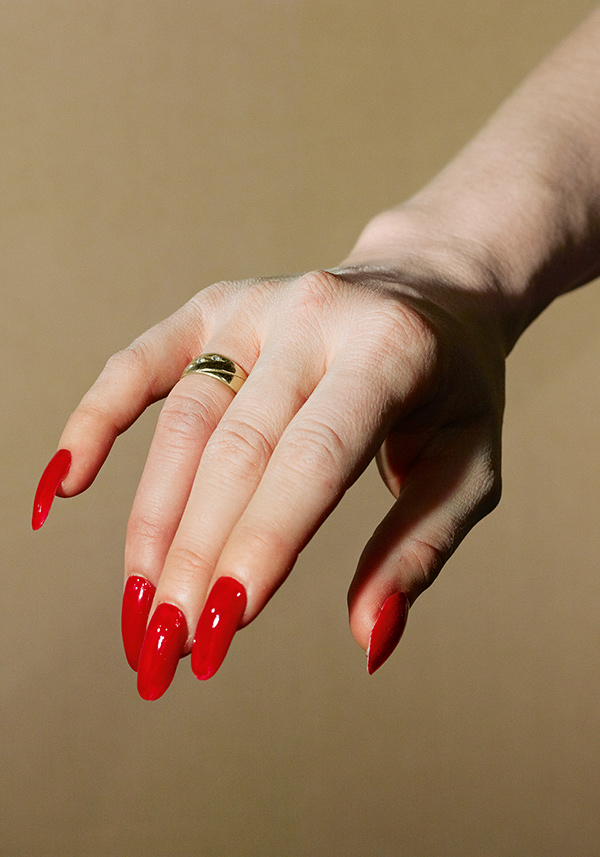
Alex Prager, Hand Model, 2017
Courtesy the artist and Lehmann Maupin, New York and Hong Kong
Over the years, Prager’s work has earned comparisons to Cindy Sherman, Philip-Lorca diCorcia, and filmmaker Douglas Sirk. When citing her influences, it’s filmmakers she mentions first—Maya Deren, Federico Fellini, Jean-Luc Godard, Sidney Lumet. When her work was featured in the Museum of Modern Art’s New Photography 2010 exhibition, Prager debuted her first short film, Despair (2010), and the earliest images from her dynamic and tableau-like photographic series Face in the Crowd (2013), which contain so many interworking storylines that they give the sensation of being moving pictures, in the purest sense of the words. Among Prager’s other abiding influences are the films Jaws (1975) and The Wizard of Oz (1939); she identifies with their psychological, visceral depictions of crowds.

Alex Prager, Radio Hill, 2017
Courtesy the artist and Lehmann Maupin, New York and Hong Kong
With Radio Hill (2017), shot from above, the viewer is given an omniscient overview of the bizarre constructs and strange, heightened characters in the street below: a woman in curlers walks through the rain with a half-eaten hotdog; a cop brandishes an ice-cream cone; three smartly dressed men, all in fedoras, look as if they’ve wandered in from some other era. “I’m looking at real life and figuring out how to amplify and exaggerate and add humor and drama and make it more palatable,” Prager says. And yet, in this image, she directs emotional attention to her main character, the lone figure in the picture who gazes upward and toward the camera, her anxiety palpable, aware of having been seen.
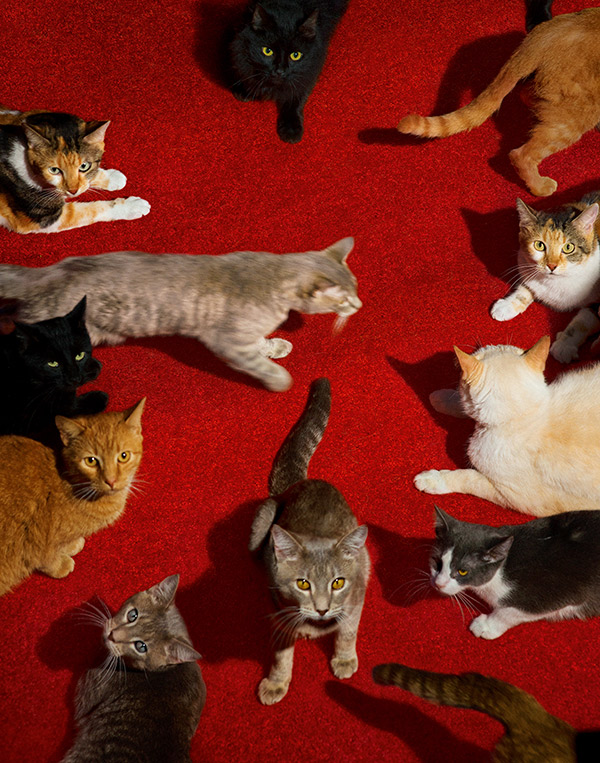
Alex Prager, Cats, 2017
Courtesy the artist and Lehmann Maupin, New York and Hong Kong
The thread, and threat, of seeing and being seen is one Prager continues to explore in photographs of crowds, including ones composed of nonhumans, as in Cats (2017), and in short films, as with the haunting La Grande Sortie (2016), which stars Émilie Cozette as a ballerina who becomes overwhelmed by her awareness of her audience. Film, Prager explains, enables her to approach still photography in novel directions, incorporating a narrative sense of interconnectedness in her pictures in literal ways too. “I’m fascinated with finding ways of bringing these fabricated worlds together,” Prager says.
To continue reading, buy Aperture, Issue 231 “Film & Foto,” or subscribe to Aperture and never miss an issue.












